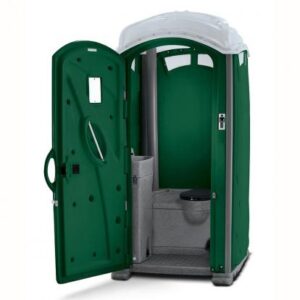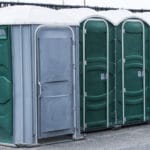How Does A Porta Potty Work? How A Porta Potty Works
How does a porta potty work? Well, many persons have been hearing about porta potties, but do not actually know what it means, and by extension, they do not understand how porta potty works, either. Let me brief you a bit. According to Wikipedia, a porta potty, also known as portable/mobile toilet is any type of toilet that can be moved around, some by one person, some by mechanical equipment. Most types do not require any pre-existing services, such as sewage disposal, but are completely self-contained.
How to use porta potties and where to use them.
Porta potties can be used in a variety of situations, for example in urban slums of developing countries, at festivals, for camping, or on boats. However, a well-known type of portable toilet is a chemical toilet but other types also exist, such as urine-diversion dehydration toilets, composting toilets, container-based toilets, bucket toilets, freezing toilets and incineration toilets.
How Does A Porta Potty Works?
If you want to understand how porta potty, or potties works/work keep reading.
A porta potty consists of a translucent roof, vents, and a high-density body made of aluminum and polyethylene. On the inside, there is a non-splash urinal, toilet seat, holding tank (usually 60 gallons), and a non-slip floor to prevent any messy accidents.
Mind you, there are different types of porta potties; some units also contain a flushing mechanism and pressure system that help circulate water and chemicals inside the tank.

Unlike normal restrooms, porta-potties are not connected to any plumbing or sewage and their primary purpose is to hold waste temporarily until it can be disposed of by a professional sanitation team.
What is the Chemical Used Inside Portable Toilets?
There is no universal or generic formula for the chemical inside a porta-potty. However, the five main ingredients inside that blue swamp are:
- Water
- Blue Dye
- Fragrance
- Surfactants
- Biocides and enzymes

Dye is mixed into water to help hide the eyesore appearance of waste.
Blue chemicals are of the standard use because they turn green after mingling with enough waste, indicating to workers that the chemicals inside are no longer effective and should be replaced.
Fragrances are used to mask the foul smell associated with human waste. The two most commonly used scents are Bubblegum and cherry.
Surfactants placed in the concoction also help the fragrances dissolve better in water. It helps the scent spread more uniformly throughout the unit.
Biocides and enzymes are used in most modern porta-potty units is comprised of enzymes and microbes that feed on the odor-causing bacteria in human waste and speed up the decomposition of organic matter, making disposal easier later on, it is also less toxic.
You might like: Porta Potty Liquid Deodorizer
How Porta Potty Works: Porta-Potties and Weather
While porta-potties are usually effective for large gatherings, weather can compromise them. The hotter the temperatures the more intense odors emitted by waste bacteria can be, causing them to stink up the unit more quickly. Therefore, to combat this, operators bump up the chemical-to-water ratio in the summer.
While a porta-potty unit contains vents and can also reflect light to help reduce heat, it is also wise to move the unit to an area with less direct sun light and where there is more natural airflow.
When weather is colder, on the other hand, a salty brine must be added to the chemical tank in order to prevent it from freezing out.
To do so, porta-potties include a clever salt-emission tool: as porta-potty patrons always use the urinal,which is a cake of rock salt releases more brine into the tank to lower the freezing point of the chemical solution and prevent the formation of frozen excrement (which, needless to say, would make cleaning very difficult).

How are Porta-Potties Emptied?
How does a porta potty works in other to be emptied? Because they are self-containing, the waste in porta-potties needs to be removed by mobile means. On an average daily, a sanitation worker will work to service 40 to 50 units, and porta-potties are cleaned on a weekly basis or approximately once every 100 uses.
To empty the unit’s bowels, sanitation workers connect a vacuum directly to the holding mobile sewage tank or output hole if the unit has one. See how it works below, the vacuum suctions the waste into a large tanker truck that is equipped with a waste storage unit and a smaller freshwater tank.

Once the human waste is removed, workers fill the porta-potty holding tank with some fresh water, dye, and an enzyme solution. They are expected to spray the walls, floors, seats, and urinals to clear bacteria and any doo that might have splashed around.
Paper towels, toilet paper, hand sanitizers, and other supplies are also restocked. The tanker truck driver then delivers the waste to a municipal treatment plant to be disposed of along with the waste from traditional plumbing systems.

How To Rent A Porta Potty: Below Are What to Consider Before Renting a Porta-Potty
There are different sizes or porta potties. This goes to show that portable toilets come in many shapes, sizes, and features. When renting a porta-potty, there are a few important factors to consider.
The Type of Project or Event
The type of event to be held will help determine the correct kind of portable toilet and how much rental time you need. For example, you can choose from standard porta-potties or upgrade to “luxury” trailers and climate-controlled units based on the project.
Number of People
The general rule of thumb is that there should be at least one porta-potty for every 40 to 60 people – if it’s for a construction site, that ratio should be higher at one unit for every 20 workers.
Location
If you have more land to cover, you’ll definitely need to rent more units. Also, the proximity of the unit to your event or construction site will also affect the delivery and maintenance costs.
Maintenance
Depending on the time duration of your event, more regular maintenance might be required to keep the porta-potties clean. You’ll also have to confirm that the rental company you choose upholds appropriate sanitation standards.

Portable toilets have come a long way over the years. Some units now have marble walls, porcelain seats, flushing systems, and sanitation amenities. The bottom line: porta-potties provide an effective, safe, and inexpensive way to take care of your business.
Hope the above has answered your question: How does a porta potty work? How Porta Potty Works?










